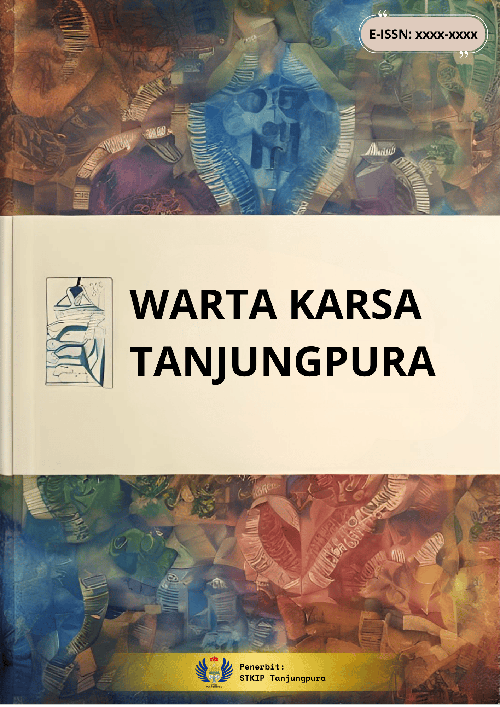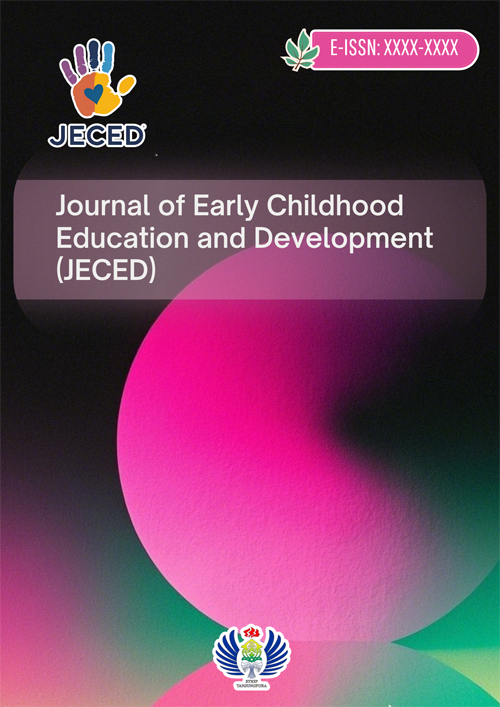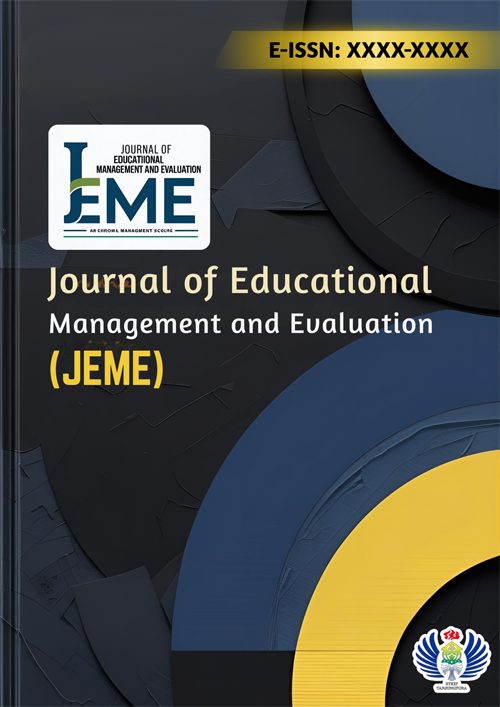Keterukuran Modul Ajar Matematika SMK Bidang Keahlian Teknologi Kontruksi Dan Bangunan
Keywords:
Keterukuran, Konstruksi, Modul Pembelajaran, Matematika, Sekolah Menengah Kejuruan (SMK)Abstract
Pembelajaran matematika di SMK, khususnya pada program keahlian Teknologi Konstruksi dan Bangunan, memiliki tantangan tersendiri. Sering kali, materi yang diajarkan bersifat abstrak dan kurang menyentuh aspek praktis yang dibutuhkan di lapangan kerja. Padahal, industri konstruksi menuntut pemahaman spasial, kemampuan menghitung secara tepat, serta keterampilan menggunakan teknologi. Sayangnya, modul pembelajaran yang tersedia belum banyak yang mampu menjembatani kebutuhan antara teori dan praktik. Di sisi lain, kemajuan teknologi seperti GeoGebra, Augmented Reality (AR), dan Building Information Modeling (BIM) belum dimanfaatkan secara maksimal dalam proses belajar mengajar. Hal ini menciptakan kesenjangan antara kompetensi yang diajarkan di sekolah dan yang dibutuhkan dunia kerja. Oleh karena itu, diperlukan pengembangan modul matematika yang tidak hanya kuat secara konseptual, tetapi juga terukur, kontekstual, dan terintegrasi dengan teknologi digital. Modul seperti ini diharapkan mampu meningkatkan pemahaman siswa, memperkuat keterampilan vokasional, dan membekali mereka dengan kompetensi abad ke-21 yang relevan dengan dunia konstruksi
References
Abdurasulovich, K. J., & Komila, A. (2023). The Role Of Mathematics In The Formation Of Design Competence Of Future Architects And Building Engineers. International Scientific Journal, 2(1). Access Mes ;
Acuña, A. M. (2021). Polya and GeoGebra: A dynamic approach to problem solving. European Journal of Science and Mathematics Education, 2(2A). https://doi.org/10.30935/scimath/9649
Aprianka, S., Setiani, A., & Imswatama, A. (2021). Validitas E –Modul Berbasis Open Ended Meteri Sistem Persamaan Linear Dua Variabel Pada Pembelajaran Daring untuk Siswa SMK. Jurnal Cendekia : Jurnal Pendidikan Matematika, 5(3). https://doi.org/10.31004/cendekia.v5i3.896
Arellano, C. E. O., & Osorio, F. C. (2021). Student for Mathematics Teachers and the Construction of the Disciplinary Identity. Estudios Pedagogicos, 47(1). https://doi.org/10.4067/S0718-07052021000100109
Armstrong, A., Gomes, V. B. F., & Struth, G. (2016). Building program construction and verification tools from algebraic principles. Formal Aspects of Computing, 28(2). https://doi.org/10.1007/s00165-015-0343-1
Asysyaffa, M., & Soebagyo, J. (2021). Pengembangan Modul Berbasis Matematika Terapan pada Materi Matriks untuk Peserta Didik Kelas X SMK Jurusan Teknologi dan Rekayasa. Jurnal Cendekia : Jurnal Pendidikan Matematika, 5(3). https://doi.org/10.31004/cendekia.v5i3.946
Ayuningsih, F., Sutama, & Suyatmini. (2022). Pengembangan Modul Ajar Matematika Materi Kuantor Berbasis Steam PJBL Pada SMK Teknik Komputer Dan Jaringan. Aksioma: Jurnal Program Studi Pendidikan Matematika, 11(4).
Baidowi, B., Subarinah, S., Hayati, L., Novitasari, D., & Made Intan Kertiyani, N. (2022). Pelatihan Penyusunan Modul Ajar Matematika Berorientasi Kemampuan Berpikir Kritis bagi Guru Matematika SMK Kota Mataram. Rengganis Jurnal Pengabdian Masyarakat, 2(2). https://doi.org/10.29303/rengganis.v2i2.235
Ceravolo, R., Invernizzi, S., Lenticchia, E., Matteini, I., Patrucco, G., & Spanò, A. (2023). Integrated 3D Mapping and Diagnosis for the Structural Assessment of Architectural Heritage: Morano’s Parabolic Arch. Sensors, 23(14). https://doi.org/10.3390/s23146532
Chen, Y. (2022). Measurement, Evaluation, and Model Construction of Mathematical Literacy Based on IoT and PISA. Mathematical Problems in Engineering, 2022. https://doi.org/10.1155/2022/3278401
Clarke, S., & Engelbach, R. (1990). Ancient Egyptian construction and architecture. In Dover books on architecture.
Das, S., Xu, S., Gleicher, M., Chang, R., & Endert, A. (2020). QUESTO: Interactive Construction of Objective Functions for Classification Tasks. Computer Graphics Forum, 39(3). https://doi.org/10.1111/cgf.13970
de Corte, E. (2004). Mainstreams and Perspectives in Research on Learning (Mathematics) From Instruction. Applied Psychology, 53(2). https://doi.org/10.1111/j.1464-0597.2004.00172.x
Denis, O. (2021). Global Dimensional Mathematics. Journal of Advances in Mathematics and Computer Science. https://doi.org/10.9734/jamcs/2021/v36i730378
Difinubun, F. A., Makmuri, M., & Flavia Aurelia, H. (2022). Analisis Kebutuhan Modul Ajar Matematika untuk Meningkatkan Kemampuan Pemecahan Masalah Siswa SMK Kelas X. Griya Journal of Mathematics Education and Application, 2(4). https://doi.org/10.29303/griya.v2i4.244
Divia, M., & Fitri, Y. (2021). Pengembangan Modul Dengan Menggunakan Model Pembelajaran Realistic Mathematic Education(RME) Pada Siswa Kelas X TAV SMK Negeri 5 Padang. Jangka:Jurnal Pendidikan Matematika Ekasakti, 1(2).
Gilboa, N., Dreyfus, T., & Kidron, I. (2023). Meta-mathematical aspects of definitions. Educational Studies in Mathematics, 114(3). https://doi.org/10.1007/s10649-023-10252-x
Guerrero, O. (2021). Construcción de conocimientos sobre la enseñanza de las matemáticas en los estudiantes para los profesores de matemáticas a través de vídeos. Revista Latinoamericana de Investigacion En Matematica Educativa, 24(1).
Hansson, S. O. (2020). Technology and Mathematics. Philosophy and Technology, 33(1). https://doi.org/10.1007/s13347-019-00348-9
Iqbal, M., Hamdani, H., & Rustam, R. (2018). Eksplorasi Etnomatematika Pekerja Bangunan dalam Membangun Rumah Etnis Melayu Ketapang. Jurnal Pendidikan Dan Pembelajaran, 7(11).
Khanlari, A. (2019). Engaging Prospective Engineers In Math Education Through Robotics And Knowledge Building. Proceedings of the Canadian Engineering Education Association (CEEA). https://doi.org/10.24908/pceea.vi0.13767
Killip, G. (2020). A reform agenda for UK construction education and practice. Buildings and Cities, 1(1). https://doi.org/10.5334/bc.43
Lluis i Ginovart, J., Toldrà Domingo, J. M., Fortuny Anguera, G., Costa Jover, A., & de Sola-Morales Serra, P. (2014). The Ellipse and the Oval in the Design of Spanish Military Defence in the Eighteenth Century. Nexus Network Journal, 16(3). https://doi.org/10.1007/s00004-014-0211-y
Merrill, C., & Comerford, M. (2004). Technology and Mathematics Standards: An Integrated Approach. The Technology Teacher, 64(2).
Mufidah, I., Susanto, H., & -, S. (2022). Analisis Kebutuhan Bahan Ajar Matematika Siswa SMK Kelas X. Jurnal Silogisme : Kajian Ilmu Matematika Dan Pembelajarannya, 6(2). https://doi.org/10.24269/silogisme.v6i2.4316
Nurlaili, F., Mulyati, B., & Saragih, F. E. (2021). Pengembangan Modul Pembelajaran Praktikum Akuntansi Lembaga/ Instansi Pemerintah. Jurnal Pendidikan : Riset Dan Konseptual, 5(3).
Ostwald, M. J. (2021). Architecture and Mathematics: An Ancient Symbiosis. In Handbook of the Mathematics of the Arts and Sciences. https://doi.org/10.1007/978-3-319-57072-3_138
Ostwald, M. J. (2023). Constructing Vision, Surface, and Form in Architecture. In Nexus Network Journal (Vol. 25, Issue 3). https://doi.org/10.1007/s00004-023-00742-z
Panes Chavarría, R., & Lazzaro-Salazar, M. (2018). Trayectorias formativas y la identidad profesional de futuros profesores de matemática. Revista UCMaule, 54. https://doi.org/10.29035/ucmaule.54.9
Panjaitan, H. R., Sihaloho, B., & Simamora, L. (2023). Sosialisasi Pengembangan Modul Ajar Matematika pada Materi Trigonometri di SMK Parulian 1 Medan. Abdi Cendekia : Jurnal Pengabdian Masyarakat, 2(2). https://doi.org/10.61253/abdicendekia.v2i2.173
Paurienė, G., & Žemaitaitytė, I. (2020). The role of the teacher`s vocation in the efficiency building of an education system. Acta Paedagogica Vilnensia, 45. https://doi.org/10.15388/ActPaed.45.9
Pirrone, C., Nicolosi, A., Passanisi, A., & di Nuovo, S. (2015). Learning potential in mathematics through imagination and manipulation of building blocks. Mediterranean Journal of Social Sciences, 6(4S3). https://doi.org/10.5901/mjss.2015.v6n4s3p152
Pitta-Pantazi, D., Christou, C., Demosthenous, E., Pittalis, M., & Chimoni, M. (2022). Nurturing mathematical creativity for the concept of arithmetic mean in a technologically enhanced ‘personalised mathematics and mathematics inquiry’ learning environment. ZDM - Mathematics Education, 54(1). https://doi.org/10.1007/s11858-021-01308-4
Purwati, D. E. (2023). Media Ajar Matematika Berbasis STEM Menggunakan Augmented Reality Untuk Siswa SMK. AKSIOMA : Jurnal Matematika Dan Pendidikan Matematika, 14(2). https://doi.org/10.26877/aks.v14i2.16080
Satriawati, G., Ridwan, M., & Kustiawati, D. (2023). Pengembangan Bahan Ajar Transformasi Geometri Berbantuan Geogebra Untuk Memfasilitasi Kemampuan Visualisasi. Algoritma: Journal of Mathematics Education, 4(2). https://doi.org/10.15408/ajme.v4i2.28853
Simpson, G., Hoyles, C., & Noss, R. (2006). Exploring the mathematics of motion through construction and collaboration. In Journal of Computer Assisted Learning (Vol. 22, Issue 2). https://doi.org/10.1111/j.1365-2729.2006.00164.x
Sudiansyah, S., Rif’at, M., & Hartoyo, A. (2023). Measurability of the mathematics teaching modules on problem solving-skills in the concentration of agribusiness expertise in plantation. Al-Jabar : Jurnal Pendidikan Matematika, 14(1). https://doi.org/10.24042/ajpm.v14i1.16078
Tamagola, R. H. A. (2022). Pengembangan Modul Pembelajaran Berbasis Pendekatan Saintifik pada Kelas X SMK Negeri 1 Luwuk. Linear : Jurnal Ilmu Pendidikan, 6(1). https://doi.org/10.53090/jlinear.v6i1.269
Tkachenko, V., Kwilinski, A., Klymchuk, M., & Tkachenko, I. (2019). The Economic-Mathematical Development of Buildings Construction Model Optimization on the Basis of Digital Economy. Management Systems in Production Engineering, 27(2). https://doi.org/10.1515/mspe-2019-0020
Valongo, A., & Felgueiras, M. (2022). Constructing the Continuity Concept. WSEAS Transactions On Advances in Engineering Education, 19. https://doi.org/10.37394/232010.2022.19.11
Winatha, K. R., Suharsono, N., & Agustin, K. (2018). Pengembangan E-Modul Interaktif Berbasis Proyek Matematika. Jurnal Pendidikan Teknologi Dan Kejuruan, 4(2).
Wubbels, T., Korthagen, F., & Broekman, H. (1997). Preparing teachers for realistic mathematics education. Educational Studies in Mathematics, 32(1). https://doi.org/10.1023/A:1002900522457
Wulandari, O., Siregar, A., & Syahlan, R. (2022). Pengembangan Modul Logika Matematika Berbasis Higher Order Thinking Skill Untuk Meningkatkan Kemandirian Belajar Siswa. In MES (Journal of Mathematics Education and Science) (Vol. 8, Issue 1).
Wulandari, T. C., Rahayu, S., & Pranyata, Y. I. P. (2017). Workshop Penyusunan Modul Pada MGMP Matematika SMK Malang. JAST : Jurnal Aplikasi Sains Dan Teknologi, 1(2). https://doi.org/10.33366/jast.v1i2.944
Youssef, M. A., Sobh, H., & ELkordy, A. (2021). Application Of Mathematics In Performative Architecture. Journal of Al-Azhar University Engineering Sector, 16(61). https://doi.org/10.21608/auej.2021.207714
Zulfikar, R. N., & Tamrin, M. (2019). Pengembangan Modul Matematika dengan Pendekatan Metakognitif untuk Memfasilitasi Kemandirian Belajar Siswa SMK Muhammadiyah Kupang. ANARGYA: Jurnal Ilmiah Pendidikan Matematika, 2(2). https://doi.org/10.24176/anargya.v2i2.3887
Downloads
Published
Issue
Section
License
Copyright (c) 2025 Sudiansyah Sudiansyah, Muad Dinoto, Feny Apriani, Rhohaila Rhohaila, Deri Feriyadi

This work is licensed under a Creative Commons Attribution-ShareAlike 4.0 International License.













